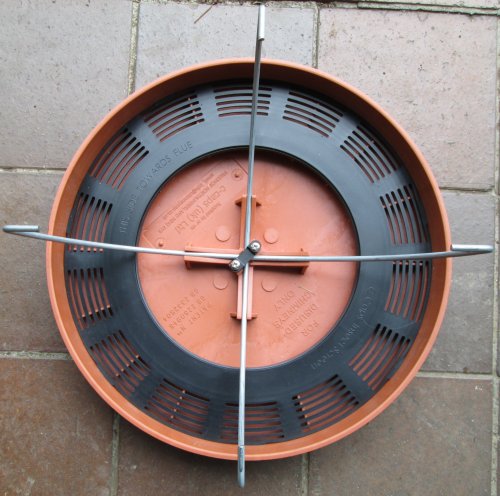
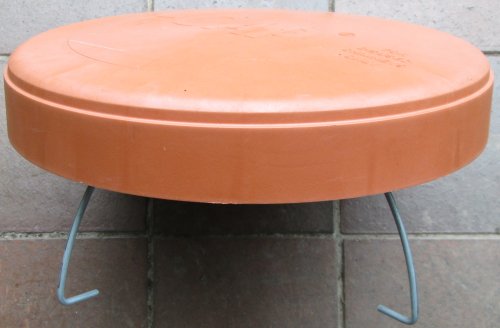
Insect-proofing disused chimneys
Many of my honey bee colony removals are from disused chimneys, usually fitted with 'elephant's foot' cowls. Such a cowl converts a chimney into an excellent cavity for a honey bee nest. The cowl not only provides shelter from the rain, but also its bottom rim offers a support on which the first combs can be built. Thereafter the bees will build their way down the chimney, filing it with comb, honey, pollen and developing young bees. If left undisturbed for several seasons, this nest can extend down for a few feet. In one case reported to me, the bottom of the comb was visible up through the throat of a disused bedroom fireplace!
As we can't blame the resulting inconvenience and the expense of colony removal on the bees for choosing such an ideal cavity, the only option is to prevent them getting into it in the first place. For several years, I have been recommending that clients fit C-caps to their chimneys.
Below left: C-cap underside showing fixing springs and insect
grille (black disc)
Below right: C-cap top showing fixing springs


C-cap is supplied flat but is easily assembled by slotting the springs into the grooves provided and securing them with the clamp and screws provided. It is inexpensive and quick to fit, being held in place by the four galvanised steel springs.
However, it is arguable that however resistant to sun and weathering is C-cap's plastic, it is no match for the ceramic of an elephant's foot cowl. The question then is how to make the elephant's foot cowl insect-proof. The solution I have used for several years is to secure a piece of polypropylene garden windbreak mesh to the bottom opening of the cowl using cable ties.
Below: insect-proofing the bottom of an elephant's foot cowl
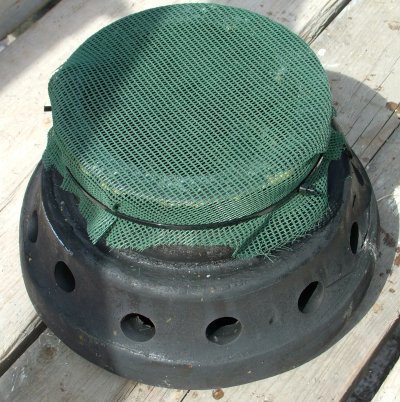
It is particularly important to insect-proof a cowl that is to be refitted in a chimney pot that has had a honey bee colony in it. The reason is that residual comb and propolis, not to mention any spilt honey, is a powerful attractant to honey bee swarms looking for a place to set up home. The comb and propolis will continue to have their effect for many years, possibly decades.
After a colony cut-out in the summer of 2014, the client chose to substitute stainless-steel mesh for my piece of polypropylene mesh. Even though the polypropylene is screened from direct sunlight, it seems highly likely that its service life will be less than stainless-steel, which will no doubt last at least as long as the cowl itself. Also, the steel prevents any damage to the insect-proofing by gnawing, for example, after a colony cut-out, by returning forager bees or by any residual bees that are left further down the flue, out of reach of the bee vacuum. Furthermore, as the mesh, once fitted, extends to the dome of the cap, it is less of a restriction to the aperture for ventilation than mesh fixed over the bottom hole.
I would like to acknowledge Keith Williams for suggesting this cowl modification and thank him for providing the following photos to illustrate how it is done.
The mesh must be 8 or more wires per inch (25mm) in order to exclude both honey bees and wasps. It can be obtained cut to an economic size from several suppliers on the Internet. The cost for a 1.2 x 1 metre piece supplied for this job was £43.00 including VAT and delivery. This was sufficient for several cowls and works out cheaper than fitting numerous C-caps.
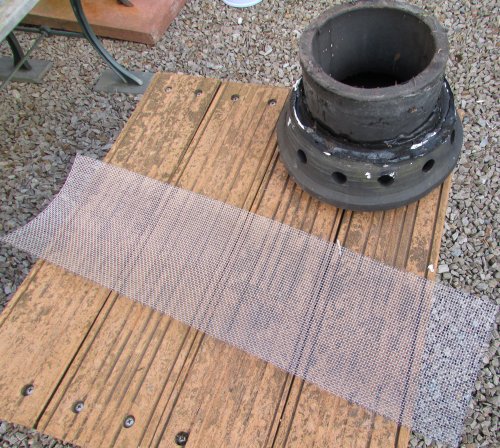 Left: mesh cut ready for insertion
into cowl
Left: mesh cut ready for insertion
into cowl
Below left: cylinder of mesh inserted into cowl to give a tight
fit; ends secured with copper wire to hold the mesh in shape.
Below right: ensure the mesh is seated against the underside of the cap dome and apply a
seal of silicone sealant
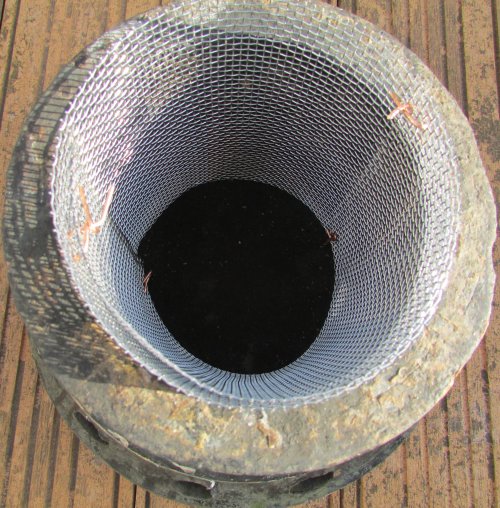
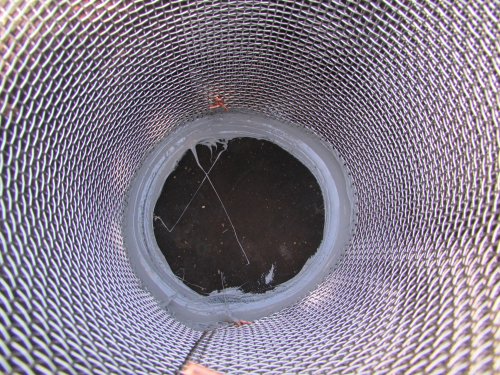
Below left and right: mesh cylinder projecting from the cowl; silicone sealant applied
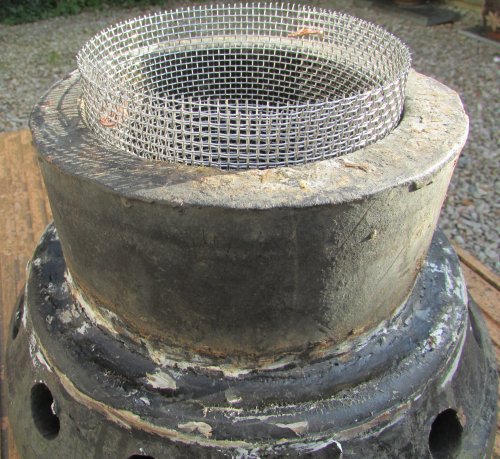
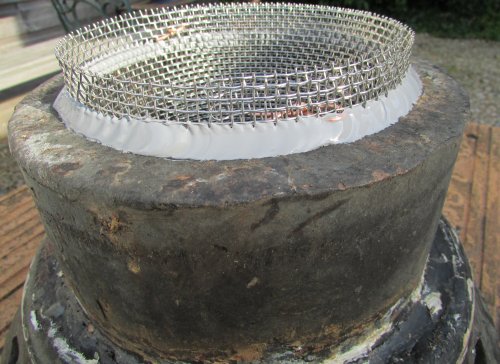
The cowl is then refitted to the chimney pot and a bead of silicone sealant is applied all round to prevent ingress of rain water.
David Heaf's bee removals index